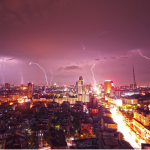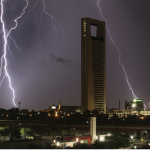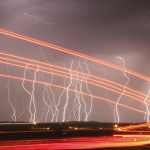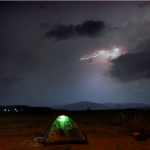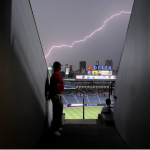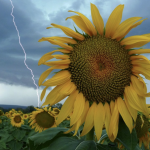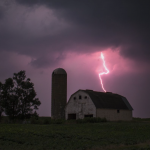Summer lightning strikes


By Lydia Ramsey From Business Insider
It’s finally summer, so don’t be surprised if you get caught in an unexpected rain shower accompanied by lightning and thunder.
In the northern hemisphere, most lightning occurs in the summer months. It’s also the time of year when the most deaths by lightning occur.
Here are some of the most epic images of lightning strikes that photographers have captured over the last few years.
IMAGES;
Reuters
Lightning is created when positive and negative charges bump up against one another inside clouds and discharge their electricity. Ever pulled off a freshly-dried sweater and felt your skin crackle underneath? Same idea. In this photo of a lightning storm from July 2015 outside Barstow, California, electricity charges the ground in lines of light.
Reuters/Gene Blevins
Source: NASA
Contrary to popular belief, lightning can strike the same place twice, especially tall buildings. The myth that a lightning strike permanently changes the electric charge of the ground where it hits, making it immune to further strikes, is bucked by places like the Torre Ciudadana in Monterrey, Mexico that’s been hit plenty of times.
Daniel Becerril/Reuters
When it hits, lightning can get up to 50,000 degrees Fahrenheit, meaning the immediate heat of these strikes was pretty toasty. Rods reach out everywhere in this photo taken in a June 2011 storm in Belgrade, Serbia.
All that heat points to the fact that lightning is powerful: The energy in a single bolt would be enough to power a 60-watt light bulb for 6 months. In early September 2014, these bolts lit up Kunshan, a city in eastern China, dazzling the otherwise well-lit city.
Stringer/Reuters
So what makes summer the best time for lightning? Warmer air holds more water, meaning there’s more electrical instability in the clouds. Here, lightning ominously illuminates the Srebrenica Genocide Memorial in Bosnia on July 10, 2012, the night before a mass burial of 520 newly identified genocide victims. The memorial commemorates the lives of Muslim men and boys killed in a 1995 massacre by Serbian forces..
Dado Ruvic/Reuters
Source: How Stuff Works
Because lightning travels the shortest path to the ground, it’s better to stay away from trees, which are more likely to be electrocuted than an open field. Practically identical to Harry Potter’s lightning-shaped scar, this bolt touches down over a barn in Donnellson, Iowa in July 2012.
Adrees Latif/Reuters
Source: NOAA
The finger-like bolts of lightning you can see here are the electrons traveling the path of least resistance to the ground. Here, the bolts reach for the Swiss Federal Palace in Bern, Switzerland on July 17, 2009.
While it often coincides with a sky full of ominous clouds, lightning can also strike in relatively clear skies — even as far away as 10 miles from the center of a storm. The sunflowers in this photo from the south of France didn’t see this bolt coming in this not-so-cloudy image from August 2011.
Pascal Rossignol/Reuters
While scary, the odds of being struck by lightning in the US — even at a baseball game at Turner Field in Atlanta during a June 2015 baseball game where this picture was taken —are very low. In any one year, the average American has a one in a million chance of getting struck. In comparison, you’re actually more likely to be killed by a mosquito-transmitted infection.
Tami Chappell/Reuters
Source: NOAA, Business Insider
For more on this story go to: http://www.businessinsider.com/how-lightning-and-thunder-is-created-2016-6?utm_source=feedburner&%3Butm_medium=referral&utm_medium=feed&utm_campaign=Feed%3A+businessinsider+%28Business+Insider%29

